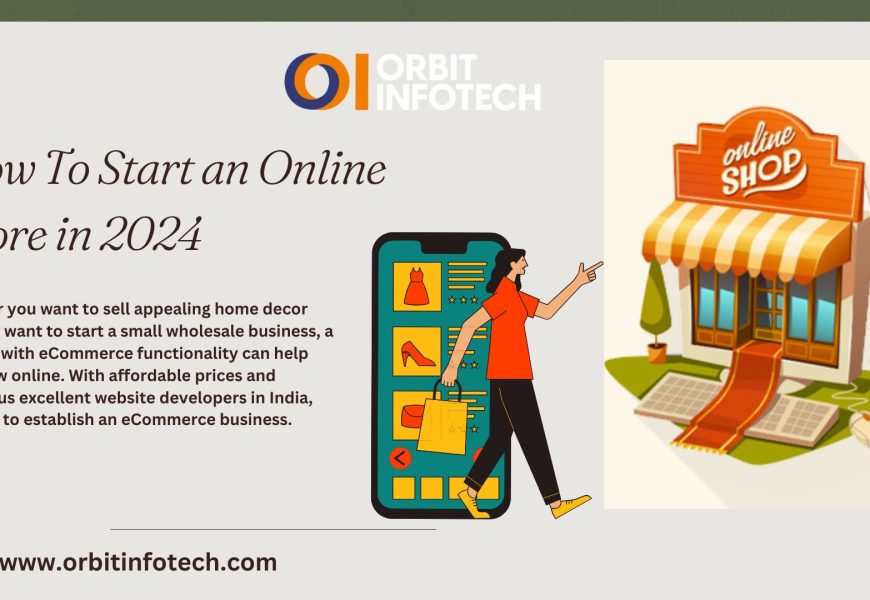Starting an online business has become more accessible than ever, especially with the growing availability of e-commerce tools and digital platforms. To succeed, you’ll need a clear strategy that includes solid branding, a strong online presence, and effective SEO tactics to rank on Google and attract a steady stream of customers. Here’s a step-by-step guide to starting an online business in 2025 and optimizing for Google growth.
Step 1: Choose a Profitable Niche and Business Model
Choosing the right niche is the first step to building a successful online business. A niche allows you to focus on a specific target audience and reduces competition by catering to a particular market segment.
Attract More Organic traffic with Best Atlanta SEO Agency
Tips for Choosing a Niche:
- Research Demand: Use tools like Google Trends, Ahrefs, or SEMrush to gauge the popularity of a niche and ensure there is a demand for your products or services.
- Analyze the Competition: Look at competitors in your niche to see how saturated it is and if there’s room for your business to stand out.
- Focus on Passion and Profit: Choose a niche that aligns with your interests and has profit potential to ensure long-term motivation.
Step 2: Build a Strong Brand and Create a Business Website
A well-defined brand and professional website can set your online business apart. Your website is the core of your digital presence and a primary driver for online sales.
Key Branding Steps:
- Choose a Unique Business Name: Select a memorable and descriptive name that resonates with your niche.
- Create a Logo and Visual Identity: Use colors and visuals that appeal to your target audience and reflect your brand’s personality.
- Build a User-Friendly Website: Platforms like Shopify, Wix, or WordPress make it easy to create a professional-looking website, even for beginners.
Also Read:- Top Atlanta web design services company for small business
Essential Website Pages:
- Home Page: Clearly state who you are and what you offer.
- Product/Service Pages: Optimize each product or service page with descriptions that include relevant keywords.
- About Page: Share your brand story and values to build trust with customers.
- Contact Page: Make it easy for potential customers to reach out with inquiries.
Step 3: Optimize for SEO to Rank on Google
Search engine optimization (SEO) is crucial for attracting organic traffic. By optimizing your website for keywords, you can help potential customers find your business on Google and other search engines.
Important SEO Techniques:
- Keyword Research: Use high-volume keywords related to your niche to help your content rank. Tools like Google Keyword Planner and Ahrefs can provide insight into keyword popularity and competition.
- On-Page SEO: Optimize titles, meta descriptions, headers, and images on each page of your website. Include target keywords naturally to enhance relevance without overstuffing.
- Technical SEO: Ensure your website loads quickly, is mobile-friendly, and has a secure SSL certificate. Google ranks websites higher when they provide a seamless user experience.
Step 4: Create High-Quality Content
Content is a powerful way to attract, engage, and retain visitors. By creating informative and engaging content, you’ll keep users on your site longer and increase the chances of them becoming paying customers.
Content Ideas for Online Businesses:
- Blog Articles: Write about topics related to your niche and include long-tail keywords to reach specific audiences.
- Product Guides and Tutorials: Help customers understand how to use your products through informative guides.
- Video Content: Video is highly engaging and can help you reach a broader audience. Create short product demos, customer testimonials, or instructional videos.
- FAQ Page: Answer common questions to provide immediate information to potential customers and improve your SEO by incorporating relevant search terms.
Step 5: Promote Your Business on Social Media
Social media is an essential tool for building brand awareness and connecting with customers. By maintaining a consistent presence on popular platforms, you can reach potential customers, drive traffic to your website, and even improve your Google rankings through social signals.
Effective Social Media Strategies:
- Choose the Right Platforms: Identify where your target audience is most active, whether it’s on Instagram, Facebook, LinkedIn, or TikTok.
- Post Regularly: Share engaging content regularly, including product updates, promotions, and user-generated content.
- Use Hashtags: Include relevant hashtags to increase the visibility of your posts and reach a broader audience.
- Engage with Followers: Respond to comments, messages, and reviews to build trust and foster a loyal community around your brand.
Step 6: Use Paid Advertising to Increase Traffic
While organic growth is essential, paid advertising can give your new business a quick boost in visibility. Google Ads and social media ads allow you to reach specific demographics and drive traffic to your site quickly.
Paid Advertising Tips:
- Start with Google Ads: Target high-intent keywords to drive traffic to your site from people actively searching for your products or services.
- Social Media Ads: Platforms like Facebook and Instagram offer highly customizable ad options to target users based on interests, location, and behavior.
- Track ROI: Use analytics tools to measure the performance of each campaign and adjust your ads based on what drives the most conversions.
Step 7: Implement Email Marketing for Customer Retention
Building an email list allows you to connect with your audience, keep them updated, and encourage repeat sales. Regular email marketing can help you nurture customer relationships and keep your business top of mind.
Email Marketing Tips:
- Offer an Incentive: Use a discount, free shipping, or a helpful guide to encourage visitors to sign up.
- Segment Your List: Divide your email list into different segments (e.g., new customers, repeat buyers) to send personalized content and offers.
- Automate Email Sequences: Set up automated emails, such as welcome emails, abandoned cart reminders, and post-purchase follow-ups, to nurture leads without manual effort.
Step 8: Monitor Performance and Adjust Strategy
Once your business is up and running, tracking key performance metrics can help you understand what’s working and where improvements are needed.
Key Metrics to Monitor:
- Traffic and Conversions: Use Google Analytics to monitor how much traffic your site receives and which pages convert best.
- Bounce Rate: A high bounce rate can indicate issues with user experience, content, or site speed.
- SEO Ranking: Regularly check how your target keywords are ranking on Google and make adjustments to your content and SEO strategies as needed.
Conclusion
Starting an online business in 2025 is more feasible than ever, with the right niche, SEO strategies, and digital marketing approach. Building a solid foundation for your online presence by focusing on website optimization, social media engagement, content creation, and email marketing will drive traffic and help you grow on Google. By continuously optimizing and adjusting your strategies, you can create a sustainable online business that ranks well, attracts customers, and grows globally.









